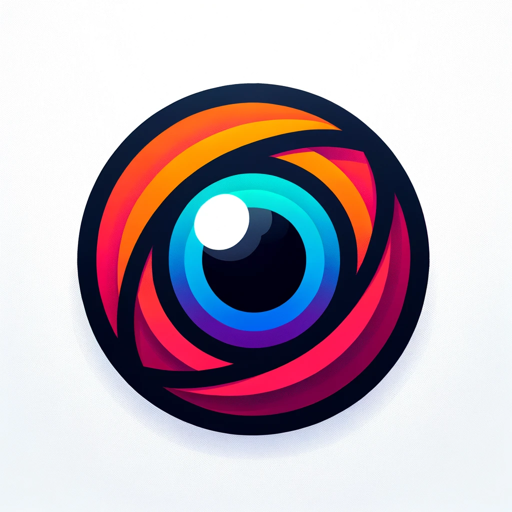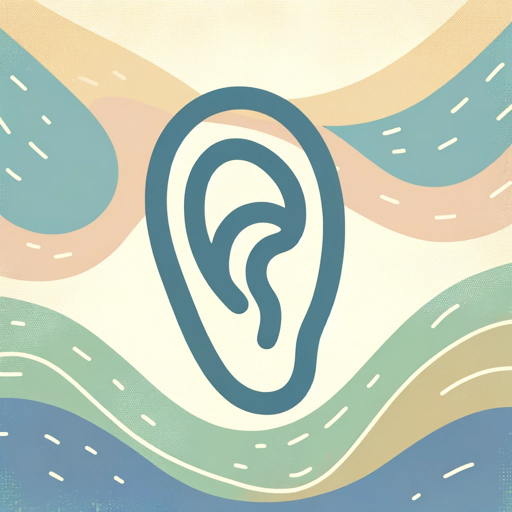Image Filter-AI-powered image enhancement tool
AI-powered filters for flawless images
How would you like to enhance this image?
Describe the mood or style you're aiming for.
What specific effects would you like to add?
Need help with any color adjustments?
Related Tools
Load More
Photo Filter AI
I turn photos into amazing stylized photos.

Image Editor
I can help with basic image operations - crop, resize, scale, rotate, convert between formats etc. You can either upload a single image or a batch of images. For any questions/suggestions reach my creator out here: https://x.com/_ruslanmustafin

Image Modifier
I modify parts of images as directed.

Image editor
Expert at image editing and processing uploaded images.

Photo Editor
A photo editing assistant that tailors edits to user requests.

Image Imitator
Analyzes images, creates prompts & generates similar (or merge into new) images
20.0 / 5 (200 votes)
Introduction to Image Filter
Image filters are tools used to manipulate or enhance the visual characteristics of digital images. These filters modify aspects such as color, brightness, contrast, sharpness, and texture, either for aesthetic improvements or functional purposes like noise reduction and detail enhancement. The primary design purpose of image filters is to transform images in ways that meet the needs of different users, whether for professional photo editing, medical imaging, or enhancing low-quality visuals for better interpretation. An example of an image filter in use could be applying a 'sharpen' filter to enhance the details of a landscape photo. The filter emphasizes edges and fine details, making the picture appear crisper and clearer. In another case, a 'blur' filter might be used in portrait photography to soften skin texture and create a smoother, more flattering look. Filters are critical across multiple industries, including photography, video production, graphic design, and even scientific fields like astronomy, where filters help clean up telescope images for analysis.

Main Functions of Image Filters
Color Correction
Example
A photographer uses a filter to adjust the color balance of an image, correcting the yellow tint from artificial lighting and restoring a natural daylight look.
Scenario
In event photography, such as weddings, lighting conditions often vary. A color correction filter helps adjust the hues, ensuring consistent and natural colors in all photos.
Noise Reduction
Example
A filmmaker applies a noise reduction filter to eliminate graininess from a low-light video scene.
Scenario
In filmmaking, shooting in low light can cause digital 'noise' or grain in the footage. A noise reduction filter removes this visual noise to produce a cleaner final product.
Edge Detection
Example
An architect uses an edge detection filter to analyze the structural outlines of a building within a satellite image.
Scenario
In urban planning and architecture, edge detection filters are applied to aerial or satellite images to highlight building contours, helping professionals in project planning and design.
Ideal Users of Image Filter Services
Professional Photographers and Videographers
This group uses image filters to enhance the quality and aesthetic of their photos and videos. For them, filters like color correction, sharpening, and noise reduction help produce professional-grade visuals that align with artistic or commercial goals. They benefit from filters that speed up post-processing while maintaining high-quality output.
Scientists and Researchers
Researchers, especially in fields like astronomy, medical imaging, and environmental science, use image filters to clean up raw data. For instance, astronomers apply noise reduction and sharpening filters to telescope images for clearer observations. Similarly, radiologists use filters to enhance medical images like X-rays and MRIs for accurate diagnosis.

How to Use Image Filter
Step 1
Visit aichatonline.org for a free trial without login, also no need for ChatGPT Plus.
Step 2
Choose an image to upload or provide a URL to the image you want to filter. Ensure the image meets format requirements (e.g., PNG or JPEG).
Step 3
Select the type of filter you wish to apply. Common options include color correction, style enhancement, noise reduction, and sharpening.
Step 4
Customize the filter settings if applicable, such as adjusting brightness, contrast, or intensity to achieve the desired effect.
Step 5
Preview the changes, then download the filtered image in the preferred resolution or format.
Try other advanced and practical GPTs
Systems Accelerator Manager
AI-powered automation for real estate success

PDF-to-Quizz
AI-powered tool for effortless quiz creation.

Ad Agency GPT
AI-Powered Marketing Solutions for All

MindMateGPT
AI-powered therapeutic support for your mental wellness.

Mars AI GPT
AI-Driven Content Creation Made Easy

Gecko Tech Prompt Artisan
AI-powered creative prompt generator.

Eshop Assistant
AI-driven e-commerce copy made easy.

Code Wizard
Enhance your code with AI-powered insights

Describe this photo!
AI-Powered Image Description Tool

Criador de Mapas Mentais em lista
AI-powered mind map generator

Christian Counsellor
AI-powered Christian guidance for spiritual support.

Mr. Paid Social Viral Hook Generator
Create engaging video hooks with AI

- Social Media
- Photo Editing
- Art Design
- Marketing Graphics
- Image Cleanup
Image Filter: Frequently Asked Questions
What types of filters can I apply to my images?
You can apply a variety of filters, including color grading, black-and-white conversion, artistic effects, noise reduction, sharpening, and more. The tool also supports custom filters for personalized enhancements.
Can I use Image Filter on mobile devices?
Yes, Image Filter is fully compatible with mobile devices. You can easily access the tool via your smartphone or tablet’s browser and upload images for filtering without downloading any app.
Is there a limit to the number of images I can filter?
For free users, there may be a daily limit on the number of images you can filter, typically capped at a set number per day. However, subscribing to premium services will allow unlimited filtering.
Can I adjust the intensity of the filters?
Yes, most filters are adjustable. After selecting a filter, you can tweak settings like brightness, contrast, saturation, and sharpness to control the effect's intensity and fine-tune your image.
What formats are supported by Image Filter?
Image Filter supports commonly used image formats like JPEG, PNG, BMP, and GIF. However, it's best to check specific format requirements before uploading large or complex files.